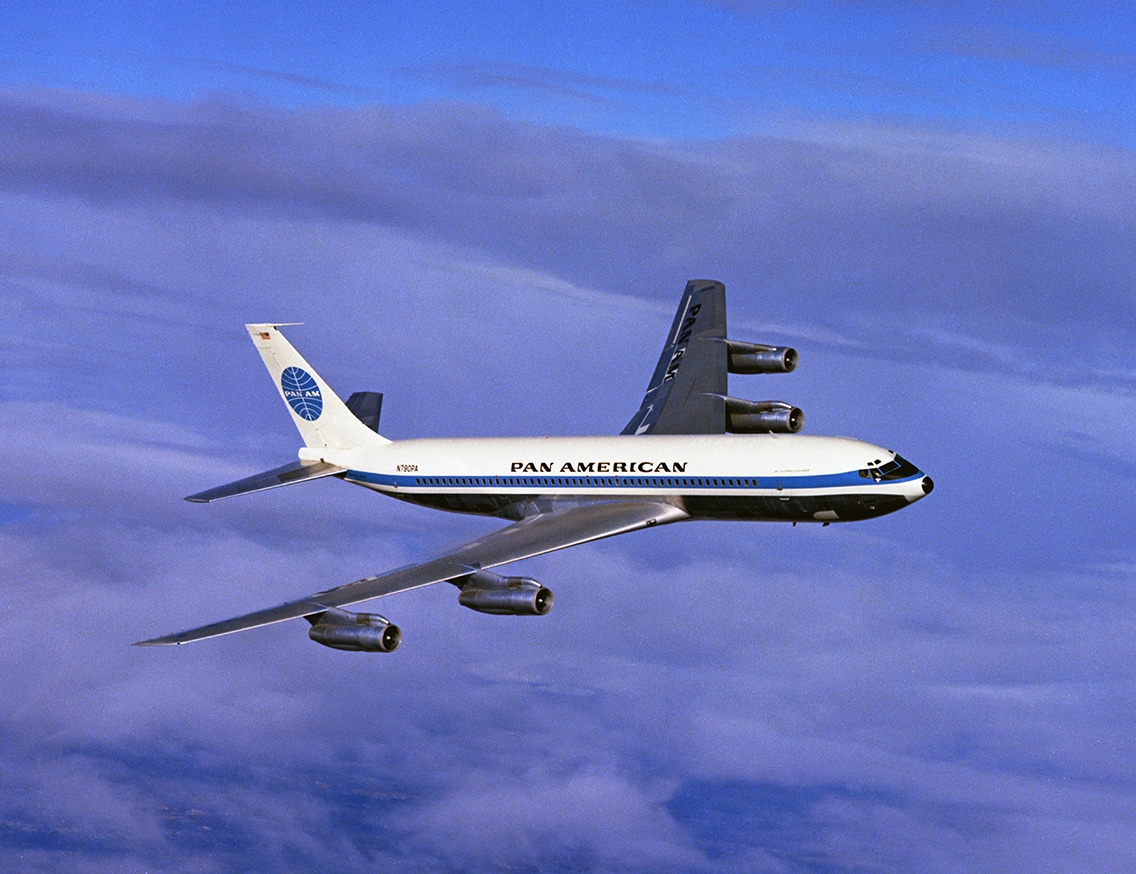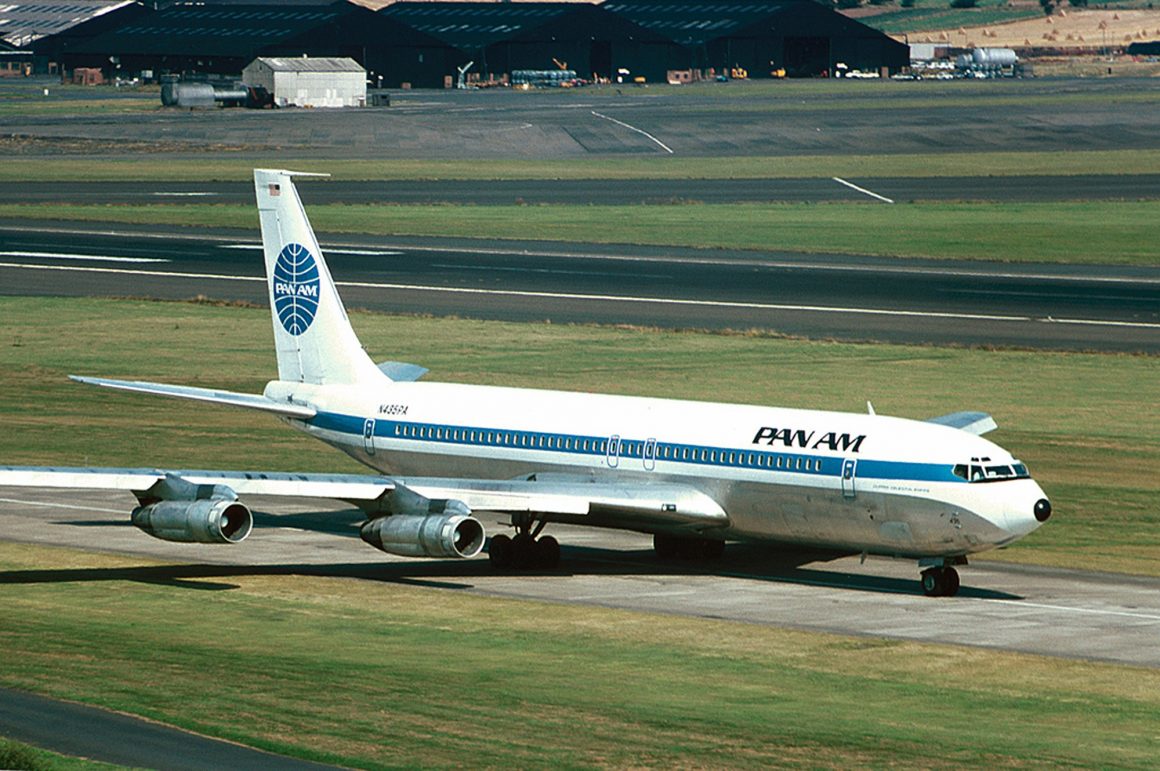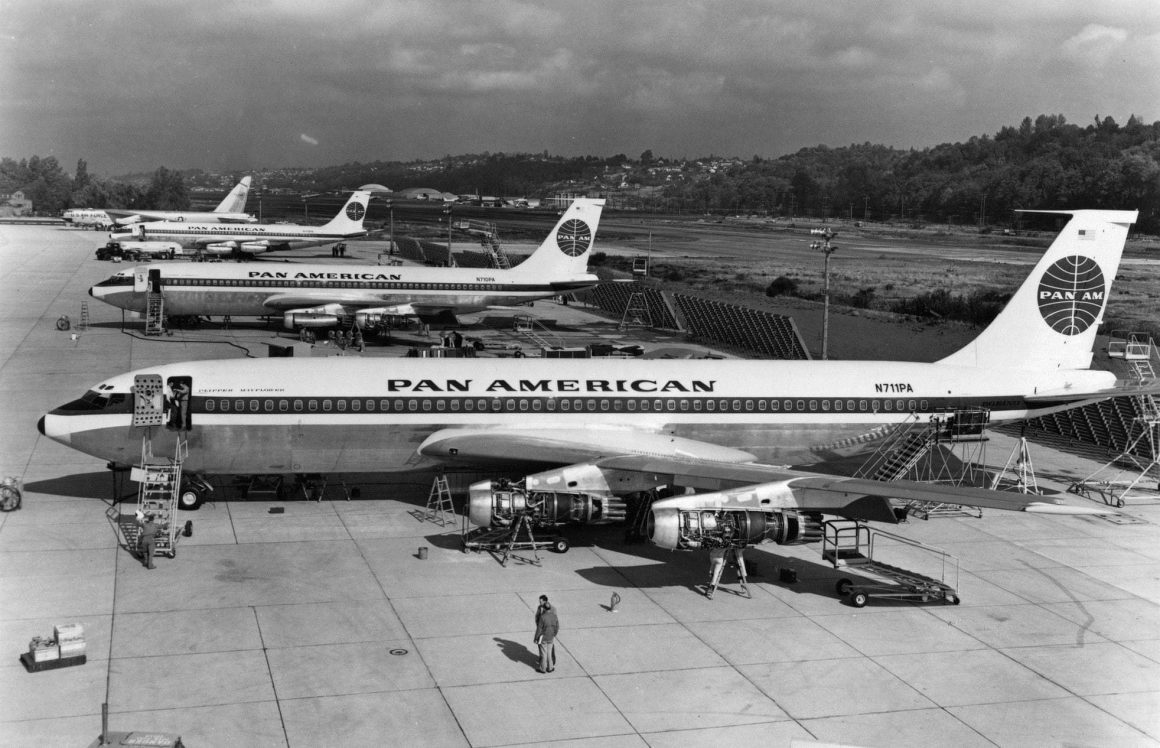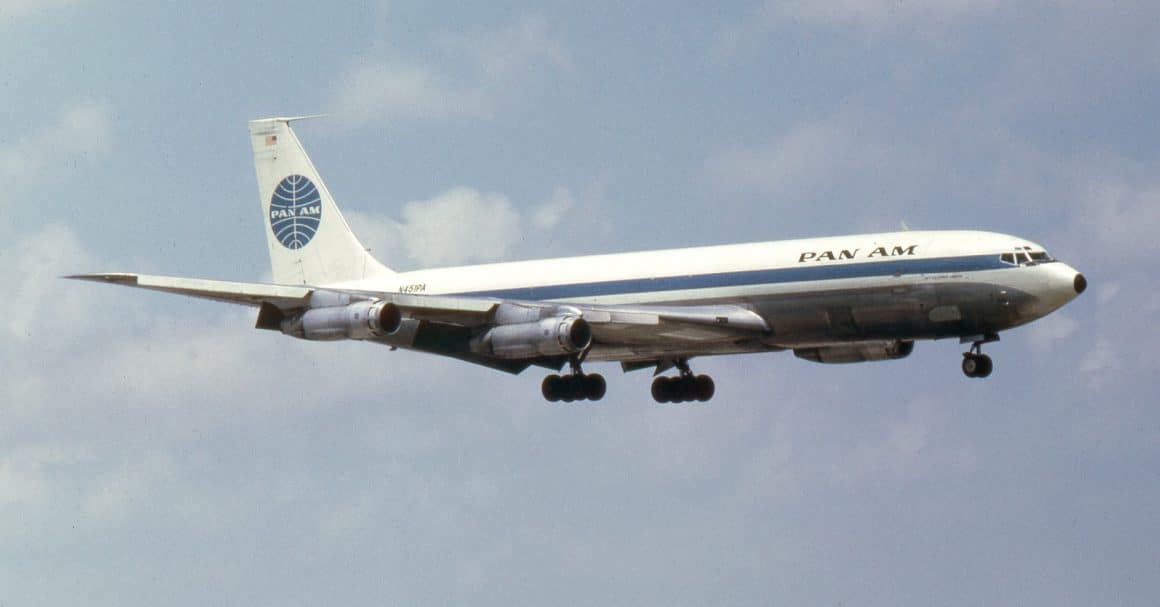Many Call This the Golden Age of Air Travel
Pan American World Airways began regular Jet Clipper service on 26 October 1958 with the Boeing 707 Jet Clipper. It was the beginning of a new age in travel – very bad news for passenger ships and trains. The commonly recognized name of Airbus back then would have been an oxymoron. For air travel was much more glorious than that by bus. Just 55 years after the Wright brothers took their first flight, Pan Am set a new standard for luxury and professionalism. Check out this beautiful video of PanAm, part of the Rick Prelinger Archives, posted by the YouTube channel Classic Airliners & Vintage Pop Culture
[youtube id=”C0umWIPCPd4″ width=”800″ height=”454″ position=”left”]
We’ve Come a Long Way Since These Days
Back in 1958, pilots actually flew their aircraft because fly-by-wire meant something quite different, something more literal – wire woven through pulleys, cranks, and tension cables to directly connect control surfaces with the pilot’s own hands. In 1958, though, most things were controlled by hand, not computers, if for no other reason than computers were as big as trucks and cars. GPS was just three unrelated English alphabet letters. This meant a lack of dead reckoning skills could mean you and your passengers were dead (at least 25 years before ETOPS- Extended Twin-Engine Operations (Engines Turning Or Passengers Swimming). There was no room for error. Training was the difference between success and failure.

It Was Indeed a Different Era
Back in 1958, JFK was known as Idlewild. The three – count ‘em, THREE members of the flight crew were always male, and the flight attendants (usually female) were stewardesses. Nobody worried about finding seats with extra legroom – because every seat had extra legroom, at least by today’s standards.
People back then actually dressed up in something called their Sunday best to travel and never needed reminding to pull up their trousers. It would have made airport security much more challenging, but no one had really hijacked a big passenger plane. Yet. But people seemed to be lighting up unfiltered Camels and Marlboros everywhere. That’s why back then the NO SMOKING sign had an on/off switch, and there was an ashtray in your armrest.

Technology Was Also Unproven
Technical types would not be seen in public without a plastic pocket protector filled with a plethora of writing instruments to jot down notes from conversations that took place using rotary dial telephones. In 1958, the commercially successful ball-point pen had been on the market for only 13 years. Teletype machines, punch cards, grease pencils, and paper logs were state-of-the-art. And in 1958, thanks to the 707, Boeing was set to become king of commercial aviation with the DNA for the 727, 737, 757, and even the 747.

Some Very Recognizable Family Traits
Most know the 707 was not the first jetliner but the first commercially successful one. Boeing would give birth to 1,011 passenger 707s, including the smaller 720 series (in addition to 800 military C-135 and C-137 versions, many still flying). The windows on a 707 were not rectangular to distribute the stress, and its fuselage was no mere cylinder but rather a double bubble joined at a crease. This and that distinguished and elegant nose gave the 707 a ten-knot speed advantage over its nemesis, the iconic Douglas DC-8.

The Jet Engine That Launched Ten Thousand Aircraft
High bypass? What high bypass? Initially powered by the decidedly sooty Pratt and Whitney JT3C-6 turbojet engines (the core of which also powered the Boeing B-52, the Douglas A-3D Skywarrior and F4D Skyray, the McDonnell Douglas F-101 Voodoo, the Vought F-8 Crusader, and the Lockheed U-2 spyplane), those four screaming engines meant someone was headed somewhere. Inside the cabin, especially sitting aft of the wing, the deep roar meant a positive rate of climb was virtually assured.

Oh the Comforts of Home in the Skies
That same, admittedly very UN first-class, seat provided the best inflight entertainment. Today, there’s nothing like that rumble and roar and the best that could be said for those plastic tubes they called “headsets” is that they were also decent earplugs. You could watch the that shaking central movie screen or the spectacularly complex 707 wing in action. Remember the spinning greasy Archimedes screw that appeared when the flaps were fully deployed? What made it all even better was knowing that except for the rudder, (hydraulic assist actually with manual operation possible) all other control surfaces except the spoilers were manual- the pilot needed 90 turns of the trimming wheel between full pitch limits.
The 707 would not only set the course for Boeing’s dominance of the jet airliner market, but there was a time when three-quarters of all civil airliners were Boeings. The 707 was also featured in popular songs and films like Boeing, Boeing (1965) starring Jerry Lewis and Tony Curtis. There was also Jantzen’s 1957 launch of its ‘707’ swimwear.

Every Era Eventually Comes to an End
Inevitably, twenty-three years after Tex Johnston, Boeing’s chief test pilot, barrel-rolled the prototype over Lake Washington, production of the passenger 707 ended in 1978 (the line stayed open for the military until 1991). As an airline, Pan Am is long gone, and its global logo is now more parochially gracing the sides of locomotives and freight cars of a miniature railroad in the northeast of the USA. In 2013, when Tehran-based Saha Air ceased regular passenger operations, so did the world’s last regular passenger service of the Boeing 707. With that, a truly special era in airline travel ended.

